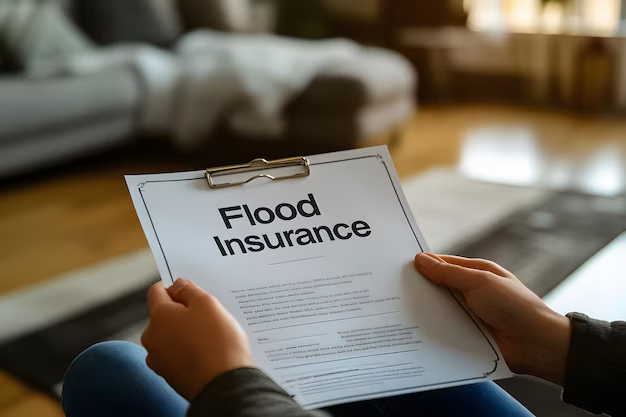In an era of increasing climate volatility, flood and earthquake insurance have become a critical component of comprehensive property protection. With extreme weather events and seismic activity on the rise, more homeowners and businesses are turning to specialized insurance policies for protection. For insurance professionals, the Flood and Earthquake Insurance Agent Commission Chart 2025 provides essential insight into how commissions are structured and what factors influence earnings in this high-risk, high-demand sector. This article explores commission rates, policy types, market trends, and best practices for maximizing revenue in 2025.
What is the Flood and Earthquake Insurance Agent Commission Chart 2025?
Table of Contents
The Flood and Earthquake Insurance Agent Commission Chart 2025 outlines the percentage-based commissions earned by agents for selling flood and earthquake insurance policies. These are specialty policies often offered outside standard homeowner or business insurance plans. The commission structure varies based on policy type (government-backed vs. private), location risk zones, premium size, and carrier agreements. As 2025 brings heightened awareness of disaster preparedness, understanding these charts is crucial for agents working in catastrophe-prone areas.
Flood and Earthquake Insurance Agent Commission Chart 2025:
Below is a general overview of expected commission ranges in 2025:
| Policy Type | New Business Commission | Renewal Commission |
|---|---|---|
| National Flood Insurance Program (NFIP) | 15% (Fixed) | 15% (Fixed) |
| Private Flood Insurance (Residential) | 12% – 20% | 8% – 15% |
| Private Flood Insurance (Commercial) | 10% – 18% | 8% – 14% |
| Earthquake Insurance (Residential) | 10% – 18% | 6% – 12% |
| Earthquake Insurance (Commercial) | 8% – 15% | 5% – 10% |
| Parametric Disaster Coverage | 12% – 20% | 10% – 15% |
Types of Flood and Earthquake Insurance:
NFIP Flood Insurance:
A federally backed program offering standard flood insurance to homeowners, renters, and businesses in flood-prone areas.
Private Market Flood Insurance:
Offered by private insurers, often providing higher limits and broader coverage than NFIP.
Earthquake Insurance (Residential/Commercial):
Protects buildings and contents from seismic damage; often excluded from standard home policies.
Parametric Insurance:
Payouts are triggered by pre-defined data (e.g., earthquake magnitude or rainfall levels), enabling fast claims settlement.
Excess Flood/Earthquake Coverage:
Supplements base policy limits for high-value properties in high-risk zones.
Factors Influencing Flood and Earthquake Insurance Agent Commissions:
Policy Type and Underwriter:
Government policies have fixed rates, while private insurers may offer performance-based commissions.
Property Location and Risk Zone:
Higher-risk areas often require more comprehensive (and expensive) coverage, resulting in higher commissions.
Policy Size and Coverage Limits:
Larger or more customized policies yield higher premiums—and thus larger commissions.
Claims History and Underwriting Difficulty:
High-risk applicants with past claims may affect policy approval and commission margins.
Agent Volume and Carrier Relationship:
Agents with higher sales volume or preferred status with insurers may access higher commission tiers or bonuses.
Market Trends Impacting Agent Earnings:
Climate Change Awareness:
Increased floods and quakes are driving higher consumer demand for disaster-specific insurance.
NFIP Reform and Expansion:
New rating systems and reinsurance models are changing the way premiums and commissions are structured.
Growth of Private Market Alternatives:
Private flood and earthquake insurers are offering flexible coverage, expanding agent commission opportunities.
Increased Use of Parametric Policies:
Faster claims processing and data-driven underwriting are gaining popularity, especially for commercial clients.
Tech-Enabled Risk Mapping:
AI-driven tools and GIS risk assessments are helping agents better understand and sell disaster insurance.
How to Maximize Flood and Earthquake Insurance Agent Commissions
Target High-Risk Zones Proactively:
Focus your marketing on areas identified as high flood or seismic risk using FEMA and geological data.
Sell Excess and Supplemental Coverage:
Upsell additional coverage beyond NFIP or base earthquake policies, especially for high-net-worth clients.
Educate Property Owners on Risk Gaps:
Explain the limitations of standard homeowner policies and the financial impact of uncovered disasters.
Leverage Digital Quoting Tools:
Streamline policy comparisons and improve client experience by using online quoting systems with real-time data.
Build Partnerships with Mortgage Lenders and Realtors:
Many property deals in risk-prone areas require disaster insurance, so position yourself as the go-to expert.
Conclusion:
The Flood and Earthquake Insurance Agent Commission Chart 2025 is more than just a guide to earnings—it’s a reflection of the growing importance of disaster coverage in a changing climate. Agents who understand commission structures, stay ahead of market trends, and provide real value to property owners can thrive in this increasingly vital insurance niche. Whether selling federally-backed plans or custom private packages, flood and earthquake insurance offers both a critical public service and a solid financial opportunity for today’s insurance professionals.
FAQ:
Q. Are flood and earthquake insurance commissions higher than standard home insurance?
A. They can be. Specialized disaster policies often have higher premiums, particularly in high-risk zones, which leads to better commissions.
Q. Do NFIP policies offer renewal commissions?
A. Yes, NFIP generally provides a flat 15% commission for both new and renewal business.
Q. Can an agent sell both NFIP and private flood policies?
A. Yes, many agents are authorized to offer both and can help clients choose the most appropriate option.
Q. How do parametric policies differ from traditional coverage?
A. They pay out based on predefined triggers (like earthquake magnitude), not on actual damage assessments, allowing for faster claims.
Q. Is earthquake insurance mandatory in high-risk areas?
A. Not usually mandatory, but strongly recommended. Some mortgage lenders may require it in seismic zones.
